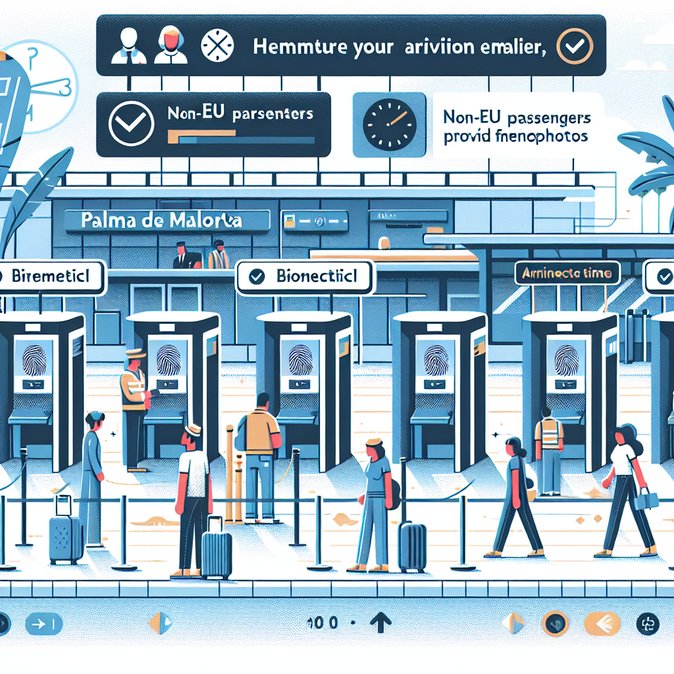
Palma de Mallorca Airport has become the second Spanish hub to flip the switch on the European Union’s new Entry/Exit System (EES). From 20 November, non-EU travellers must scan passports, submit fingerprints and pose for a photo before clearing border control, replacing manual passport stamps with a Schengen-wide biometric record stored for three years.
During a six-month transition period, mixed lanes will operate, and officers may slow checks to ensure data accuracy. Airlines and tour operators are advising British and other non-EU passengers to arrive at least 30 minutes earlier until kiosks become familiar. British residents who already hold Spain’s biometric TIE card are exempt from EES registration but should carry the card to bypass kiosks.
![Palma de Mallorca Activates EU Biometric Entry/Exit System, Joining Madrid]()
Airport operator AENA installed 36 self-service kiosks and six staffed booths for the launch and earmarked further expansions for Barcelona and Málaga in December. The Interior Ministry has allocated €83 million for nationwide deployment, aiming for full Schengen compliance by April 2026.
The system promises long-term gains—automated over-stay alerts and easier identity verification—but teething pains are likely. Travel-risk consultants urge mobility managers to brief executives on possible delays during first-time enrolment and to build extra connection buffers into itineraries.
Madrid-Barajas logged 1,819 registrations on its pilot day in October. Palma’s rollout is the first real-world test in a leisure-heavy environment, and performance will be scrutinised ahead of the summer 2026 tourist season.
During a six-month transition period, mixed lanes will operate, and officers may slow checks to ensure data accuracy. Airlines and tour operators are advising British and other non-EU passengers to arrive at least 30 minutes earlier until kiosks become familiar. British residents who already hold Spain’s biometric TIE card are exempt from EES registration but should carry the card to bypass kiosks.

Airport operator AENA installed 36 self-service kiosks and six staffed booths for the launch and earmarked further expansions for Barcelona and Málaga in December. The Interior Ministry has allocated €83 million for nationwide deployment, aiming for full Schengen compliance by April 2026.
The system promises long-term gains—automated over-stay alerts and easier identity verification—but teething pains are likely. Travel-risk consultants urge mobility managers to brief executives on possible delays during first-time enrolment and to build extra connection buffers into itineraries.
Madrid-Barajas logged 1,819 registrations on its pilot day in October. Palma’s rollout is the first real-world test in a leisure-heavy environment, and performance will be scrutinised ahead of the summer 2026 tourist season.










